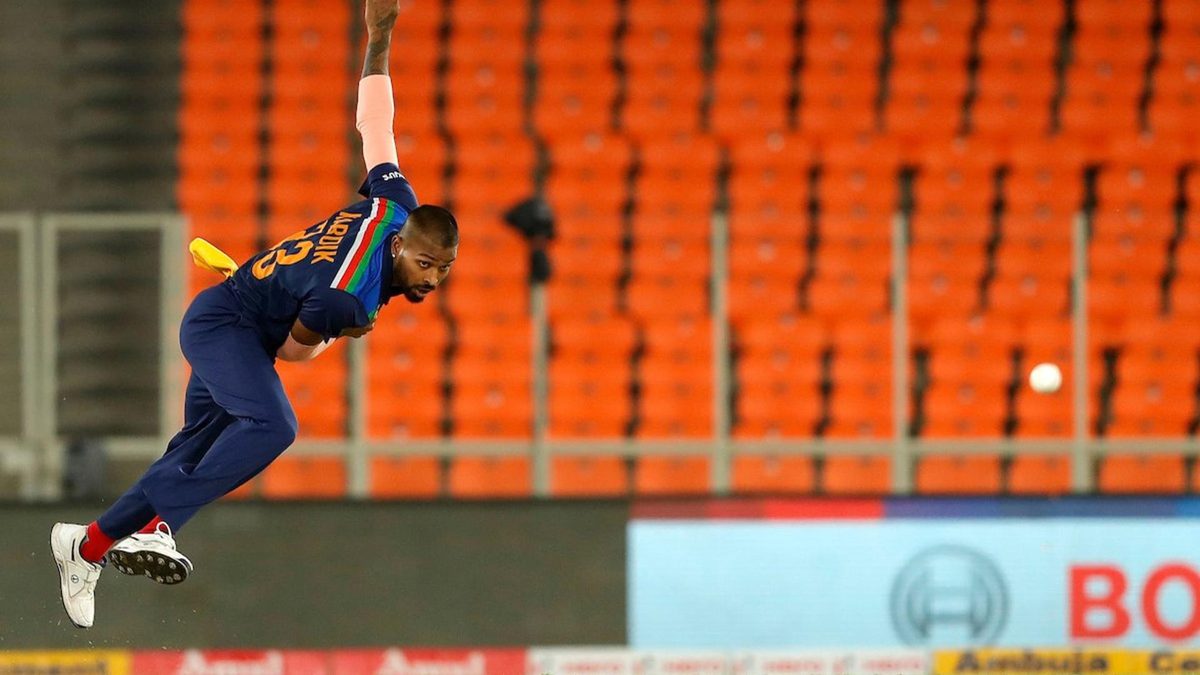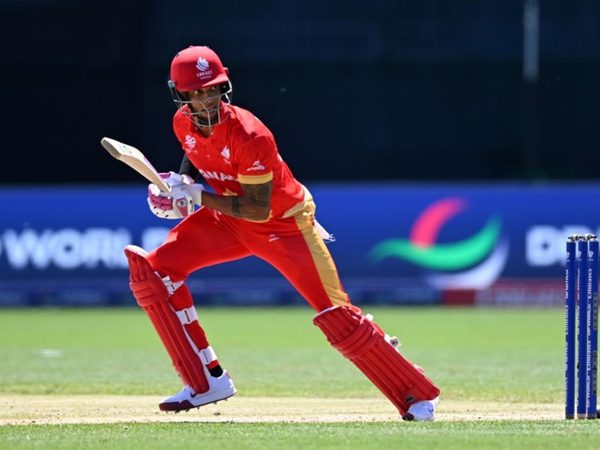
Hardik Pandya and his bowling resurgence in the ongoing T20I series against England allows India scope to improve their T20 gameplan across multiple areas, writes Rohit Sankar.
Subscribe to the Wisden Cricket YouTube channel for post-match awards, player interviews, analysis and much more.
With the series level 2-2 heading into the decider, both India and England have green tick marks against two common, related issues that have confounded them in T20Is of late – what the role of their fast bowlers in the middle overs should be and whether they can save their best bowler for the death.
Chalk and cheese with their batting approaches, India and England have a lot of similarity when it comes to the make up of their bowling combinations. A full-strength India side will have Jasprit Bumrah donning the Jofra Archer role, bowling heat up front and icing it at the death, Bhuvneshwar Kumar playing the Sam Curran role with the ball, Mohammed Shami, T Natarajan or Shardul Thakur being the Chris Jordan and Yuzvendra Chahal fitting snugly into Adil Rashid’s shoes, only metaphorically of course.
The difference is Mark Wood, who has made England a vastly better bowling unit than India’s so far in the series, but the hosts are catching up, and interestingly with Hardik Pandya, a batting all-rounder, who is back bowling full tilt after an extended break owing to a back issue.
Drowned in the excitement surrounding the additions of Ishan Kishan and Suryakumar Yadav into the mix for the second T20I was India’s ploy to use Pandya as a fifth bowler. Pandya isn’t new to the role, but his bowling numbers, in the past, haven’t been good enough for a proper front-liner, especially with no back-up options in a format where any loose balls and overs can have drastic significance.
Job’s not done yet. We go again on Saturday 🇮🇳 pic.twitter.com/ILhqUt6rfp
— hardik pandya (@hardikpandya7) March 18, 2021
But four matches into the series, the two best bowlers in terms of economy are Wood (6.33) and Pandya (6.46). While Wood has been the enforcer in the powerplay and middle overs with his high pace, almost never operating below 140 clicks, Pandya has switched between amping up his pace and relying on cutters and slower balls on the tacky wickets.
In the fourth T20I, Pandya took the new ball, bowling the second over of the chase after Bhuvneshwar had started off well. Ordinarily, Jason Roy and Jos Buttler, one of the best and most aggressive opening pairs in world cricket, would look to target supposedly the weakest bowler in the line-up, especially with the pressure of a big chase building and the fielding restrictions in play.
Instead, they were outfoxed, with Pandya varying his pace from 126kmph to 138kmph and mixing up his length from short to really short and then full. He finished the two-over powerplay spell conceding a mere five runs against two of the most explosive batsmen in the format.
He returned in the middle overs to further slow down England by taking place off the ball and mixing up his lengths, often swaying between back of a length and short. The extra bounce on one of those accounted for Roy, while the extra yard of pace – clocking up to 142kmph – had Jonny Bairstow squirming.
With the T20 World Cup in sight, Pandya bowling this well is a huge positive for India and Virat Kohli was rightly ecstatic about his return to his best.
“Credit to Hardik that he’s bowling at least three overs for us in every game,” Kohli had said. “And the next six to eight months period he’s promised he’s going to commit everything to being the all-rounder the team needs in all three formats. He plays for the team at all times and these kind of players are priceless.”
He’s still thought of as a sixth bowling option once Ravindra Jadeja returns, but in these four games Pandya has notably fulfilled two roles that give India immense flexibility in their T20I side. For one, his new ball role – one that his immaculate seam position always warranted – allows them to use Bumrah in the middle and death overs.
The other, and the bigger plus, is that it allows India to play an extra batsman if they want to against big-hitting teams like England and West Indies to try and match them shot for shot instead of banking on their bowling attack. The difference in intent as a result of this move has already been witnessed in this series when Kohli, notably, has been more proactive at the crease.
The second option is particularly enticing because India, even with their anchor-heavy batting approach, are good enough to beat most T20I teams. They can set par totals more often not and then let their bowlers get to work, with this strategy especially safe when Bumrah plays, or chase targets with a batsman averaging over 80 in the format doing exactly that.
It is against teams that go at them from the top, armed with long, powerful batting line-ups, that India might struggle. The Bumrah effect could be negated by these teams going big against the remaining bowlers, and even if they manage to take wickets through the innings, the depth means the sixes will keep come up. If Pandya can double up as the fifth bowler for such games, it gives the Indian batting line-up the additional security it desires without needing to go into consolidation mode at the fall of every wicket.
With the likes of Ishan Kishan, Suryakumar Yadav, Rishabh Pant and Pandya himself in the setup now, there’s no shortage of batsmen with six-hitting intent. But this move empowers the anchors, the Rohits, Kohlis and Rahuls, all of whom are capable of scoring quick as well as batting steady, to move up a gear. For a team that has struggled to close out important games in big events in the recent past, this flexibility, as minor as it might seem, could help enforce a major shift in mindset, one that India could do with in this format.








